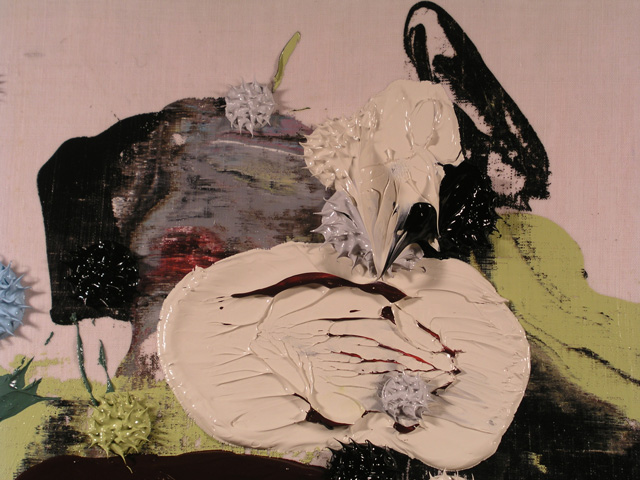August 17, 2004
UnderWater

I wish I had a digital underwater camera to show you all the amazing sights off the coast. Not many people from Tossa partake of the submariner experience here. There are many scuba divers, some tourist snorkelers... but not many locals don the mask and fins. Why? I haven't the slightest.
But the water here is fabulous. Imagine a kid's idea of the perfect aquarium: fishes in schools of several types (sardines, and flat reef fishes, and angel fish kind of silouettes and many others beyond my ability to describe) and rocks and undersea hillsides studded with shellfish (mussels for one) and sea urchins tucked into crevices with the litter of shellfish carapaces they somehow break apart and little reef fish who guard their territory jealously with tails curled up defiantly, and sea grasses and algea and little fans and sponges and the ocassional octopus deep inside rocky grottos, eyes blinking.
I would kick down, equalizing the sinus pressure four or five times as I reached the bottom, as deep as I can stand, the pressure smashing the mask to my face. I would upright myself on the bottom and try to hang out as long possible, like a hardhat diver dan ornament in a kids aquarium, in what looked like thirty feet or so of water, the hillside of the Costa Brava to oneside, the wall of immense blue (words fail now) of the Mediterranean to the other. And the fish were all around in schools, hundreds of them maybe thousands, many types beyond my ability to catalog, small as your fingers as large as two palms, not travelling anywhere but just floating, hanging out, suspended in the briney blue matrix, cerulean blue, emerald hue, aquamarine glowing lens of the sea.
I found this online:
In the waters around the Medes islands we also find a fascinating world suspended in the sea. It is a life made up of millions of micro-organisms which normally cannot be seen by the naked eye. The smallest are the bacteria and ciliforms. Next, slightly bigger, are the grass-green algae, the diatoms and the dinoflagellates which make up the phytoplankton and then, like flees which never stop moving about, we discover the copepods, amphipods, worm larvae, echinoderms, decapodiforms, and sagitta which make up a large part of zooplankton.If currents are favourable, there is a large accumulation of gelatinous plankton made up of siphonophores, micromedusiforms, ctenophores and salpas (Salpa maxima and Thalia democratica). The large jellyfish are more occasional with the exception of Pelagia noctiluca.
Close to the rocks where the sea breaks hardest we find schools of small silvery fish which in fact are the fry of the transparent goby (Atherina hepsetus), anchovies (Engraulis encrasicholus), bogues (Boops boops), European pilchards (Sardina pilchardus) and saddled bream (0blada melanura). These small fishes serve as food for the big predators -bass (Dicentrarchus labrax), amberjack (Seriola dumerili), barracuda (Sphyraena sphyraena) and Atlantic bonito (Sarda sarda)- which come to the Medes islands.

The Medes Islands are north of here off Cadaques. Back track from the link above and you can find more information on it.
Posted by Dennis at August 17, 2004 9:08 AM
hi friend, it seems that i am in different site,
oh no its the same site where I wanna go but no comments
are appearing here related to the topic. May be I am wrong
but friend got your site while searching blog in search
engine and it is nice to say that i visited ur site
in my friend's house who is layout controller
of website's. He told me that this particular
site contain reasnable layouts and good contents
which is relevant to this site. Rarely we get this
type of site. Really appreciates your blog page. Thnks.